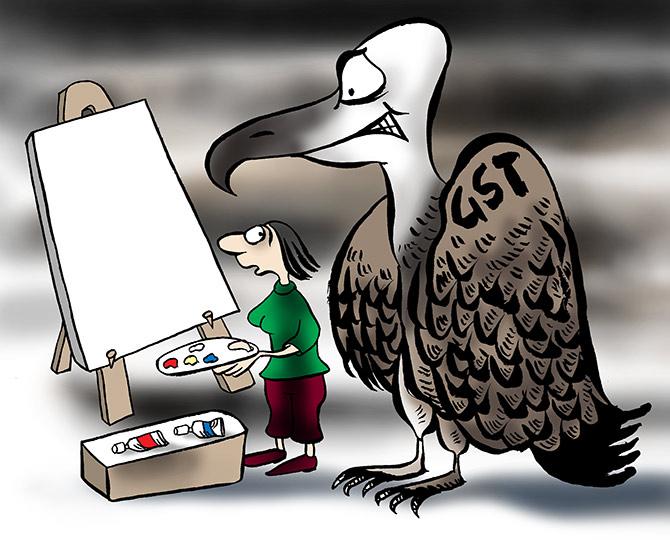 | « Back to article | Print this article |
E-invoicing would be implemented on a voluntary basis by those having an annual turnover of above Rs 500 crore from January 1.

Two things that will change the way transactions are reported under the Goods and Services Tax (GST) system in 2020 are electronic invoicing and new returns.
While both of these will be introduced mandatorily from April 1, e-invoicing would be implemented on a voluntary basis by those having an annual turnover of above Rs 500 crore from January 1.
Those with an annual turnover of over Rs 100 crore can use e-invoicing from February 1.
Finally, those with annual turnover of over Rs 100 crore will have to use e-invoicing system from the beginning of the next financial year.
In the e-invoicing system, the invoices are authenticated electronically by GST Network (GSTN) for further use on the common GST portal.
Two procedures are required in e-invoicing system - generation of invoices in standard format and reporting it on to a central portal system.
The new system requires invoice details to be uploaded on the government site - Invoice Registration Portal or IRP - on real-time basis.
Based on the uploaded details, a unique invoice reference number (IRN) will be allocated against each invoice.
IRN would be get validated through IRN portal and GSTN.
According to GSTN chief executive officer Prakash Kumar, e-invoices are generated by large number of businesses even today.
However, they all use the format as provided by the ERP or billing software they use.
Lack of a standard leads to a scenario where e-invoice generated on one billing software can’t be read by another, requiring manual data entry from electronically generated invoice.
“All this means lots of engagement in maintenance of invoice, manual feeding in system, a pile of paper work, and lot of transcription errors,” he said.
Here comes a system that does away with much of paper, human error, transcription error, saves time and gives you a format which is compatible to all.
He said no changes are required as far as the businesses are concerned as they will continue to use the same software with same user interface to generate the e-invoices such as ERP, accounting and billing software, excel based billing system etc.
The companies, which have developed the ERP or billing software, will have to make changes in their software codes to make them conform to the approved standards, he said.
Abhishek Rastogi, partner at Khaitan & Co, said the phased manner of implementation of e-invoicing will enable adequate testing of the system before it is made mandatory. Harpreet Singh, partner at KPMG, said: “In the long run, e-invoicing should be the only data collection point for the tax authorities replacing e-waybills and multiple returns.”
However, new simplified returns would be implemented from April 1.
The GST Council had earlier decided to defer the implementation of these returns from the planned staggered manner from October this year.
In the new returns, there would be one main form - GST RET-1, which will contain details of all supplies made, input tax credit availed, and payment of taxes.
This return will have two annexures - GST ANX-1 and GST ANX-2.
Form GST ANX-1 will have details of all outward supplies and form GST ANX-2 will contain details of all inward supplies.
Currently, taxpayers are filing two returns: GSTR-1, which contains details of all outward supplies made, and GSTR-3B, which is a monthly self-declaration of outward supplies, input tax credit availed, and taxes paid.
Archit Gupta, CEO of ClearTax, said the e-invoice system would be integrated with the new return filing system for filing e-way bills and new return formats.
Initially, businesses had a fear that their cash flow would be blocked because there was a proposition of only allowing credits to those invoices that were uploaded by vendors and tax discharged.
To address the issue, the government had proposed allowing businesses to avail of input tax credit on the basis of self-declarations in GSTR-3B for initial months even under the new mechanism.
Gupta said the pain point involved in frequent matching of invoices was that the taxpayer had to allocate time from his daily business activities or he has to appoint personnel to do the same.
There is also an issue of tracking and reporting of missing invoices to avail credit.
Gupta said this would put additional responsibility even though the recipient paid the tax amount to his supplier.